Adventures In The Cardboard Universe
-

The Most Monsterous Games – King of Tokyo
In this episode I give a quick review of Richard Garfield’s King of Tokyo. This is a fun game for monster kids, especially kaiju fans. https://goforthandgame.libsyn.com/the-most-monsterous-games-king-of-tokyo
-

Sul – From Gold to Iron and Rust by Jacqui Davis and Katy Grierson
I’m joined this time by Jacqui Davis, artist extraordinaire well known for board game illustration. Jacqui has been hard at work on a new project – Sul – From Gold to Iron & Rust. This is an illustrated fantasy novel and we are going to get the details straight from Jacqui herself. I hope you…
-

ReWind: Robotech Reconstruction – A Conversation with…Austin Smokowicz of Dr. Wictz Games
My guest this time is Austin Smokowicz of Dr. Wictz. Austin gives me the run down on their new game, Robotech Reconstruction, coming soon from Strange Machine Games. This is an interesting show as I’m a Robotech novice and Austin was more than happy to get me up to speed on the franchise. The game…
-

Join The Revolution – A Conversation With…Benny Sperling and Derik Duley of Roll & Write Revolution
This show I’m joined by Derik Duley and Benny Sperling. They are the design and publishing team behind Roll & Write Revolution. The Revolution has published four groundbreaking roll and write games. We talk about these and their most recent one, Train In Vain.
-
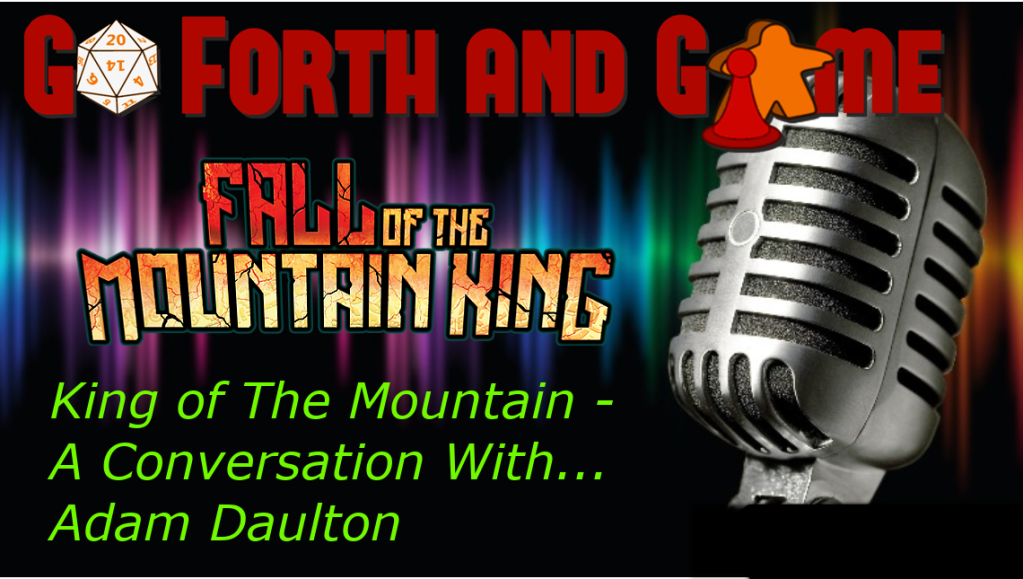
King of The Mountain – A Conversation With…Adam Daulton
In this episode, I talk with Adam Daulton about his new game, Fall of the Mountain King. It is being published by Burnt Island Games and is a prequel to their hit, In The Hall of the Mountain King. Adam is a great guest and we have a great conversation about how the game evolved…
-
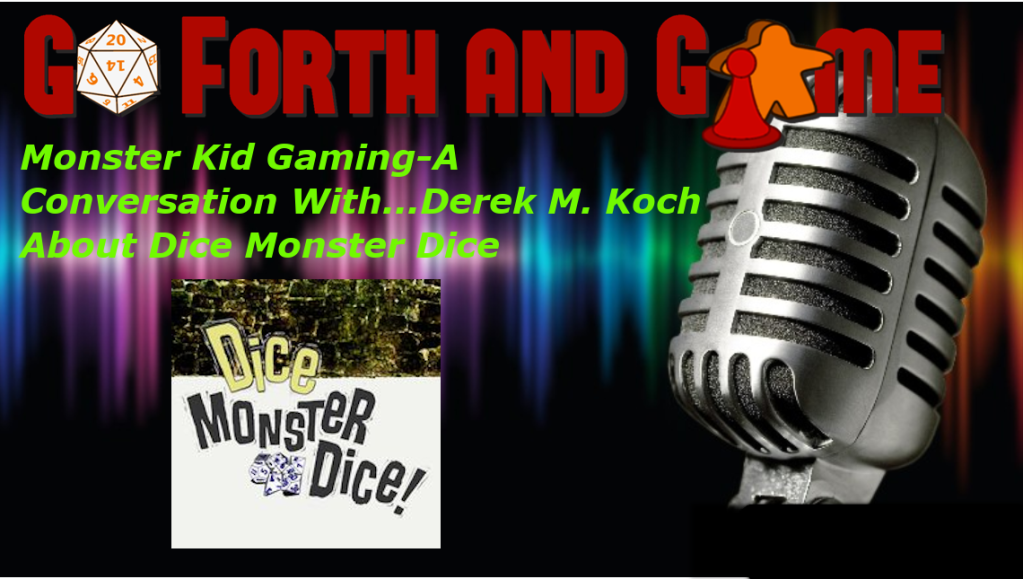
Monster Kid Gaming – A Conversation With…Derek M. Koch of Dice Monster Dice
Welcome to episode 111 of Go Forth And Game. I’m very happy to have Derek M. Koch as my guest this time. Derek is the main man behind Monster Kid Radio. MKR is the Rondo-award winning, weekly podcast celebrating the classic, and sometimes not-so-classic, genre cinema of yesteryear! Derek and I are talking about Dice…
-
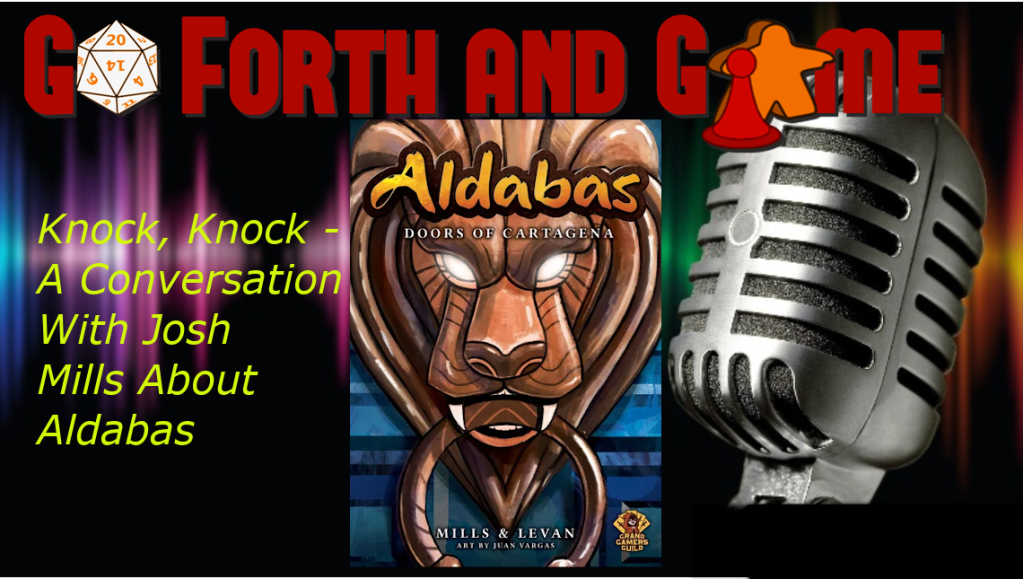
Knock, Knock – A Conversation With…Josh Mills about Aldabas
Welcome to episode 110. This time around I’m talking to my fellow Game Designers of NC member Josh Mills about his new game, Aldabas – Doors of Cartagena. Josh co-designed this one with friend of the show Nat Levan. Grand Gamers Guild is publishing it. Josh is a fantastic guest and we have a lot…
-

Episode 109 – It’s Tea Time Again! A Conversation With Connie & Dan Kazmaier About Chai: Tea For 2
In my 109th show I’m talking to Connie and Dan Kazmaier about the newest game from Steeped Games – Chai: Tea For 2. The newest member of the Chai family, Tea For 2 is a light euro strategy game, beautifully illustrated in a compact and fast playing package. Here is the link for the Chai:…
-

The Witches of Winter Trilogy…A Conversation With Micah S. Harris Part 2
Here is part 2 of my interview with author Micah S. Harris about his Witches of Winter Trilogy. We continue finding out more about the story, Micah’s influences, The Prisoner of Zenda, Ravenwood – Stepson of Mystery, and The Bible. It’s a super fun talk and I know you will enjoy it.
-
The Witches of Winter Trilogy – A Conversation with Micah S. Harris: Part 1
My long time friend and author, Micah S. Harris is my guest this time. He has just published the second book in his Witches of Winter Trilogy – Portrait of a Winter Court. It’s the continuing story of Freyja and Ambrose, their budding romance and the dangers they face. I enjoyed this book immensely. This…
-

Fishy Talk – A Conversation With…Danny Devine About Kohaku
I received my copy of Kohaku yesterday and the game is gorgeous. With people and stores getting their copies, I thought it would be a good time to repost this conversation I had with the designer, Danny Devine. Friend of the show Danny Devine is back to talk about his latest game, Kohaku. Kohaku is…
-
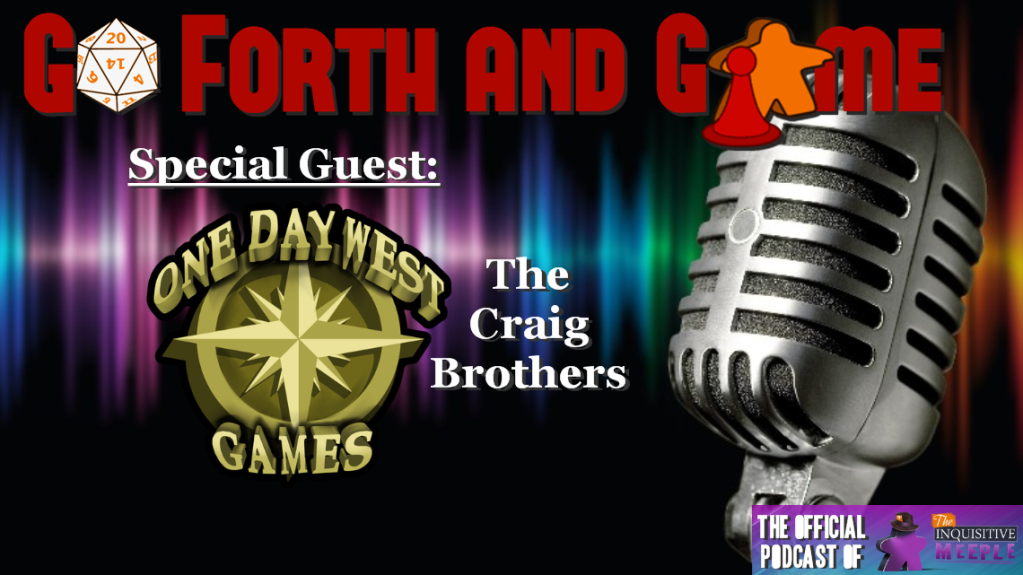
The Most Monsterous Games: Monster Highway with One Day West Games
I’m happy to talk with Ryan and Bob Craig, the guys from One Day West Games. We talked about this game back in 2019 when it was released. Mr. Sanders and I did an in depth review of it at that time. You can find that in the archives. But I wanted to revisit Monster…
-
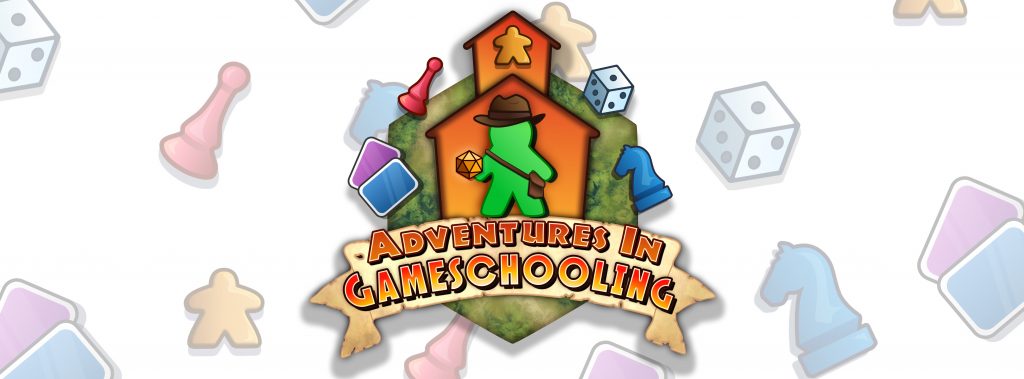
Go Forth And Gameschool 101
We continue our introduction to gameschooling with suggestions of games you can use for teaching different age groups.
-

Go Forth And Gameschool – Gameschooling 101
We are back from summer break and raring to get back on at it. In this show we introduce a new segment, Go Forth And Gameschool. Some of you may remember that we have discussed gameschooling before. But we are going to add this segment on a regular basis. So, in this show we introduce…
-
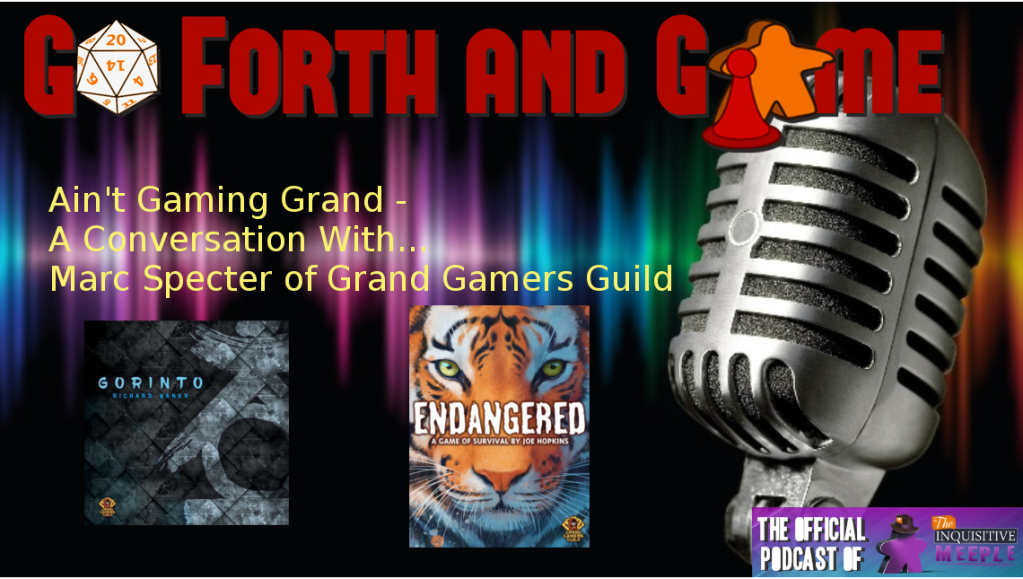
Ain’t Gaming Grand – A Conversation With…Marc Specter of Grand Gamers Guild
I have the privalege of talking with Marc Specter this time. Marc is the force behind the Grand Gamers Guild, a small independent game publishing company. You may have heard of a couple of their games – The Artemis Project, Endeavor: Age of Sail, and Endangered. We’re here to talk about their most recent project,…
-

Hiring The Squire – A Conversation With…Jon Merchant
In this episode I have the privalege of talking to Jon Merchant. Jon is a game designer and graphic artist. His first game, Squire For Hire, was a smashing success last year and he and Letiman Games have an standalone expansion for it launching on Kickstarter tomorrow. It’s called Squire For Hire: Mystic Runes and…
-
Tumble Town review
Tumble Town Designed by Kevin Russ Art by Katy Grierson, Katie Khau, Kevin Russ Published by Weird Giraffee Games Kickstarter link Summary: Tumble Town is a town building, dice stacking game where players draft dice and use them to construct the buildings of their town. Components: 100 dice in four different colors; 71 cards including…
-
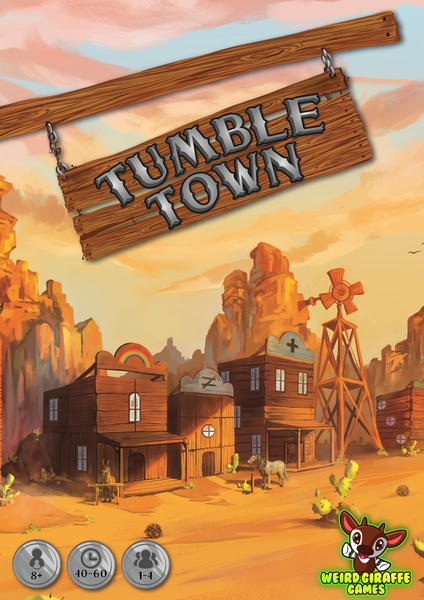
Tumbling Around Town – A Conversation With…Carla Kopp of Weird Giraffe Games
In this show I am talking to Carla Kopp of Weird Giraffe Games. We find out a little about her and Weird Giraffe. Then we fall in to talk about Tumble Town, WGG’s latest game. Tumble Town is a fun dice roller with a town building theme.
-

Galaxy Dice EX from Rampage Games
Designed by David Sheppard Art by David Sheppard Published by Rampage Games The Kickstarter can be found here. The Basics: Galaxy Dice EX is a dice rolling game for 1-4 players that harkens back to the arcade games of the past. With just a few dice and some cards, you defeat stages to eventually fight…
-
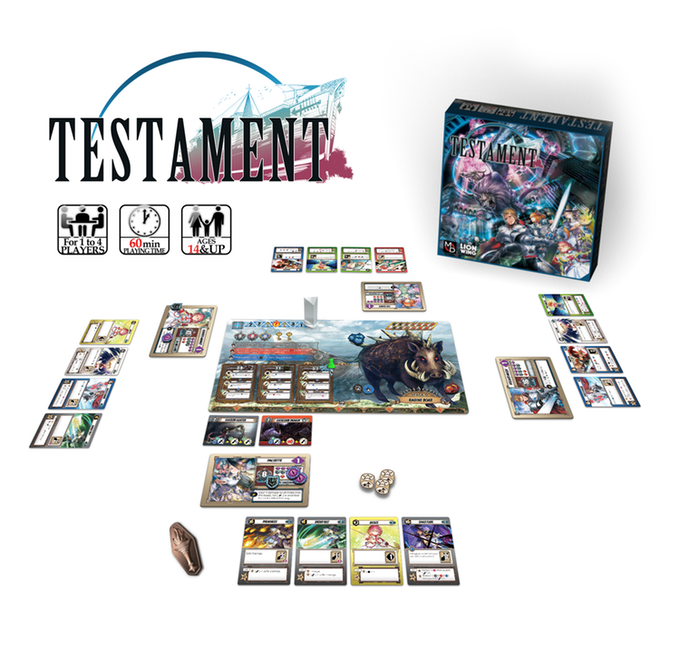
Flying Lion – A Conversation With…Lion Wing Games
This time out I have an interview that I have been holding onto for a while. I spoke with Lion Wing back in August last year and they asked me to wait until they launched their Kickstarter. Which they did this past week.
-
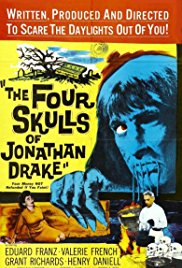
The Giant Hula Monster #5 – Return of the Astro-Games
In the last installment, I began looking at some movies to turn into a game. I’ve been sidetracked somewhat. Invasion: Hollow Earth has developed into a pretty tight little two player game. And it has birthed a much larger and more complex game keeps the core tile movement / path-building mechanic and added some scoring…
-

The Giant Hula Monster #4- Son of The Astro-Games
Let’s look at a few movies that popped into my mind. First was The Blob. Ryan and I have been talking a lot lately about cooperative games. It’s the town versus The Blob. The Blob is set up perfectly for a co-op. Ryan had the same thought. It would seemingly be a excellent example for…
-

The Giant Hula Monster #3- Conception of The Astro-Games
So last time I talked about where the idea of making the Astro-Games started. It came from my life long love of monster, science fiction, and horror movies. Not the ‘modern’ ones. Mostly pre-1975. Especially those from the 1950’s. That was the heyday of the B-movie. I love ‘em. No matter how ‘bad’ it might…
-

The Giant Hula Monster #2 – Romancing the Astro-Games
Last time I talked about science fiction as a game theme and listed some examples. There are A LOT of them. It is a oft use theme. Why? Because it sells, the IP space is open if you do something original (i.e. you can make more games in that universe), and most of the time…
-

The Giant Hula Monster #1 – The Science Fiction Theme in Games
I like science fiction. A lot. If I’m reading a book, most likely it’s science fiction of some sort. You should check out Leigh Brackett’s Eric John Stark series or anything by Robert Heinlein. I enjoy pretty much all flavors in the genre – space opera, speculative, alternate history, hard science, sci-fi spy (James Bond).…
-

What’s Buzzing? – A Review of Bees: The Secret Kingdom
Bees: The Secret Kingdom Designed by Kamil Cieslo Art by Dagmara Gaska Published by Awaken Realms lite & Van Ryder Games 2-6 players Ages 10+ (Though I believe younger players can easily grasp the game.) Length of play: 20-30 minutes Theme & Goal of the Game: In Bees, players are bees collecting pollen to make…
-
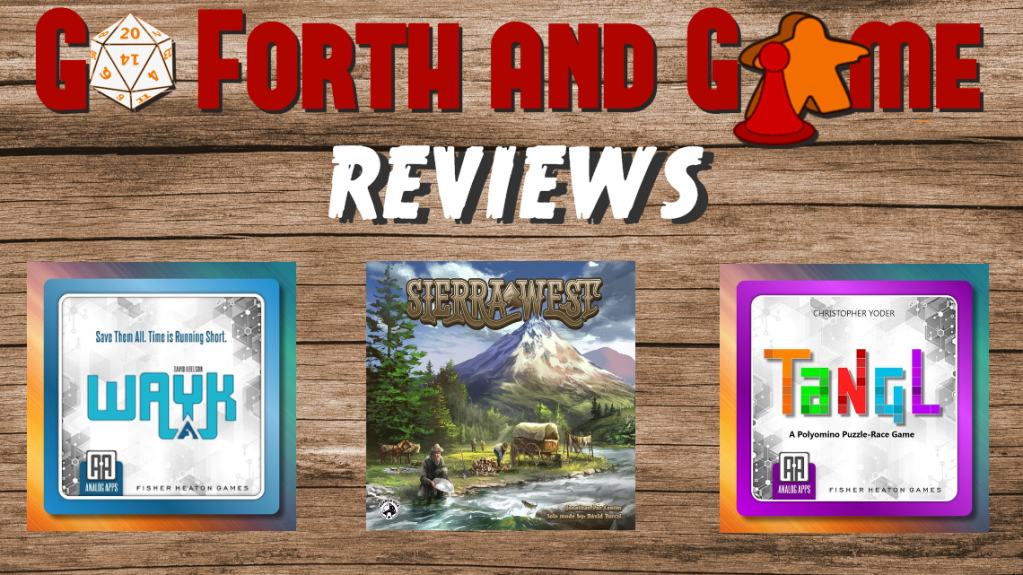
Wayk-ing Up in a Tangl in the Sierra West
Ryan and I review three games. First I talk about Wayk from Fisher Heaton Games. Then Ryan takes a look at Sierra West from Board & Dice. The last one is Tangl, also from Fisher Heaton Games. The Fisher Heaton Games are on Kickstarter right here – https://www.kickstarter.com/projects/fisherheaton/analog-apps-by-fisher-heaton-games http://traffic.libsyn.com/goforthandgame/2019_10_27_Wayk_Sierra_West_Tangl_final.mp3 The…
-

Can You Dig It? Yes, You Can.- A Conversation With…David Diaz and Helaina Cappel About Fossilis
I have the pleasure of having two guests this time. It’s Helaina Cappel of Kids Table Board Games (KTBG) and designer David Diaz. David is having his first game, Fossilis, published by KTBG! So I wanted to get them together to talk about how the game came about, what it’s about, and why KTBG loved…
-

In The City of Zorro Science – Ryan’s Reviews
This time Ryan pulls all the weight and reviews THREE games all by himself. First up is The Zorro Dice Game from Pull The Pin Games. Then it’s one of the new ones from Concrete Canoe Games, This IS Rocket Science. Last is The City from Eagle Gryphon. http://traffic.libsyn.com/goforthandgame/2019_09_29_Rocket_Sciene_The_City_Zorro_Dice.mp3 The theme for…
-

Off The Page and Out of Our Mind MGMT – A Conversation With…Jay Cormier
Game Designer Jay Cormier joins me this time to talk about his new publishing company, Off The Page Games. The company’s first game, Mind MGMT: The Psychic Espionage Game. Mind MGMT is based on the awesome comic of the same name by Matt Kindt. Jay talks about starting a game publishing company, the game, and…
-

Reviews of Periodic, The River, and Planetoid
Ryan and I are reviewing Planetoid from Portal Dragon, The River from Days Of Wonder, and Periodic from Genius Games. http://traffic.libsyn.com/goforthandgame/Periodic_Planetoid_The_River_final.mp3 The theme for Go Forth And Game is Countdown To Myocardial Infarction by Peter Gresser. Though it is in public domain we thank him for allowing us to use it.…
-

Periodic Wisdom – A Conversation With…Paul Salomon of Genius Games
It’s chemistry time! No, don’t groan. This is good news. I’m talking to Paul Salomon, the co-designer of Genius Games’ Periodic – The Game of Elements. Paul gives us the low down on the very good game about the periodic table, elements, and what they are used for. Be careful. You might learn a little…
-
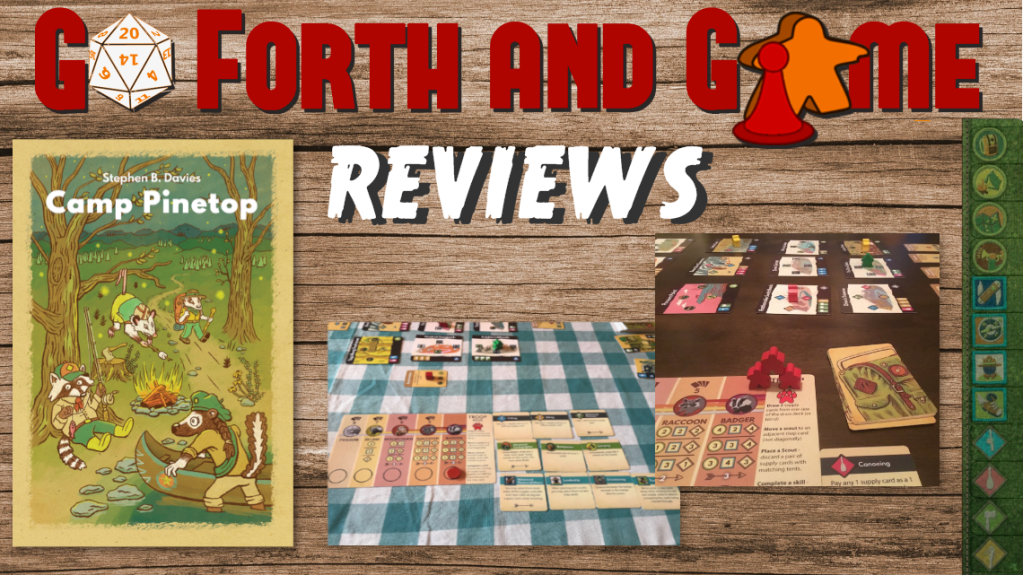
Camping Out – Ryan reviews Camp Pinetop
In this show Ryan gives us his impressions of Camp Pinetop from designer Steven B. Davies and published by Talon Strike Studios. It’s a good review and the game sounds like a winner. It hits Kickstarter on September 24. Be sure to check it out. http://traffic.libsyn.com/goforthandgame/2019_09_02_Pinetop_final.mp3 The theme for Go Forth…
-

Dice & Ink, Volume 1 – A Conversation With…Inkwell Games’ Odin Phong
This time Odin Phong is back to talk about his newest endeavor, Dice & Ink, volume 1. It’s an anthology book of roll and write games being published by his company, Inkwell Games. This cool book is loaded with 10 complete roll and writes ranging from solo games to co-op games. This is a pretty…
-
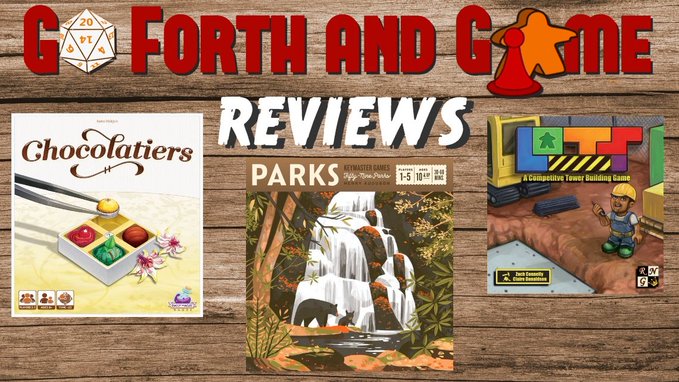
Tom & Ryan Review Chocolatiers, Parks, and LOTS.
It’s review time. First Ryan will give us the lowdown on Chocolatiers from Daily Magic Games. I’ll talk about the beautiful hiking game, Parks from Keymaster Games. Lastly, Ryan will tell us about LOTS, a new game from Royal N. Games. These are fun games and we will give you some details. http://traffic.libsyn.com/goforthandgame/2019_08_12__Ryan_Sanders_chocolatiers_Lots_Parks_final.mp3…
-

Leveling Up – A Conversation With…Dan Letzring of Letiman Games
I’m talking to Dan Letzring of Letiman Games about their latest game, Adventure Tactics. Here’s some info about the game. Adventure Tactics: Domianne’s Tower is an encounter-based, campaign-driven, cooperative deck-builder. Begin your journey as one of 5 Basic Classes and battle your way through a branching campaign where you choose your own path in an…
-

The Most Anticipated Games of 2019, Part 2
In this show Ryan and I take a look at games that are on the way in the second half of 2019. We talk upcoming Kickstarters, games hitting retail, and then we discuss the games we are most looking forward to seeing in the next few months.
-

Views From The Kids Table – Reviews of Haunt The House, Wreck Raiders, & Bugs on Rugs
Ryan and I have a great time talking about some games from one of our favorite publishers, Kids Table Board Games. Ryan revisits some of their early games then we jump in on the most recently released ones. First is Haunt The House by Helaina and Josh Cappel. Next Ryan covers Wreck Raiders. Lastly Ryan…
-

Ninja Camp Counselor – A Conversation With…Adam Daulton
I’m talking to game designer Adam Daulton this time. We discuss his published games, Ninja Camp from Action Phase and K’uh Nah from WizKids. We also talk about what he has in the queue. Ninja Camp K’uh Nah http://traffic.libsyn.com/goforthandgame/2019_06_11__Adam_Daulton_final.mp3 You can find lots more interesting gaming content at The Inquisitive Meeple, our brother…
-

Proto ATL Post Mortem With Jonathan Weaver
This time I’m talking to Jonathan Weaver about his experiences at Proto ATL, the playtesting and showcasing event that happened recently in Atlanta. http://traffic.libsyn.com/goforthandgame/2019_05_16_Jonathan_Weaver_final.mp3
-
Before The Con, part 2 – Playtesting With Daniel Solis
In this second part of our Before The Con series, Daniel Solis, the designer of such hits as Junk Orbit, Kodama, and Athelion, talks about how he prepares and runs playtest sessions at conventions. There is a ton of valuable information for game designers here. And it’s a lot of fun. http://traffic.libsyn.com/goforthandgame/2019_04_16__Daniel_Solis_final.mp3 …
-

Go Meeple Reviews – Sunny Day, Crystallo, and Chai + some chat about gateway games
This show Ryan and I review three games. First, Ryan talks about Sunny Day from Ludicorn by designer Malu Palau. Next I cover Crystallo by Liberty Kifer and published by Light Heart Games. Then we discuss what we think comprises a gateway game. Lastly Ryan raves about Chai from Steeped Games designed by Dan &…





You must be logged in to post a comment.